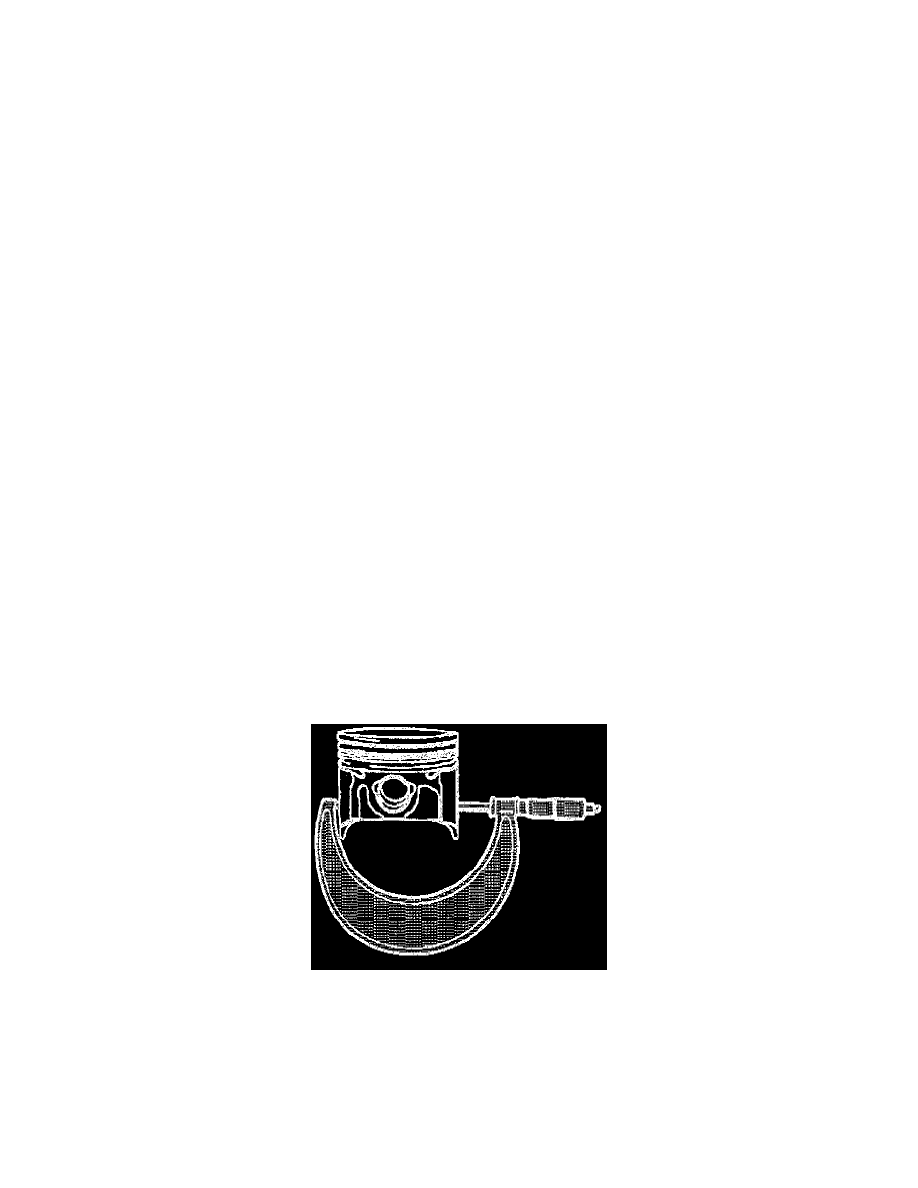Malibu V6-191 3.1L VIN M SFI (1997)

Piston: Testing and Inspection
Inspection
1. Clean the sludge and carbon from the following parts:
^
The piston
^
The piston pin
^
The connecting rod
WARNING: Bodily injury may occur if the carburetor cleaning fluid is exposed to the skin or If the fumes are inhaled.
NOTE: It is essential that the piston ring grooves are cleaned of carbon to the bare metal.
2. Clean the varnish from the piston pin by soaking it in carburetor cleaning solution.
CAUTION: Do not scrape the piston skirt.
3. Inspect the connecting rod for bending or twisting.
4. Install the connecting rod cap.
5. Place the connecting rod assembly on a checking fixture and check for bending or twisting.
6. Do not attempt to straighten the connecting rod. The connecting rods should not be bent more than 0.18 mm (0.007 inches) for every 76.2 mm
(3.00 inches) of rod length. The connecting rods should not be twisted more than 0.038 mm (0.0015 inches) for every 25.4 mm (1.00 inches) of
rod length. Replace it, if it is bent or twisted.
7. Check new connecting rods before using them.
8. Inspect the outside of the connecting rod bearing and the ID of the connecting rod lower end for wear indicating high spots in the connecting rod
lower end.
9. Inspect the upper end for scoring.
10. Inspect the piston pin for the following conditions:
^
Scoring
^
Galling caused by improper installation
^
Fit in the connecting rod and piston
11. Inspect the piston for the following conditions:
^
Scoring of the skirt
^
Cracks
^
Broken ring groove lands
^
Wear
CAUTION: When fitting pistons, both the piston and the cylinder bore condition must be considered together. Production and service pistons
have the same nominal weight and can be intermixed without affecting engine balance. If necessary, used pistons may be fitted selectively to any
cylinder of the engine, providing they are in good condition and the same weight. Do not cut oversize pistons down or engine balance will be
affected. Finish hone when selecting the piston.
12. Measure the piston diameter. When measuring piston for size or taper, measurement must be made as shown with the piston pin removed. If worn
or damaged, replace with a standard or oversize piston.
